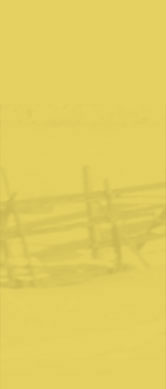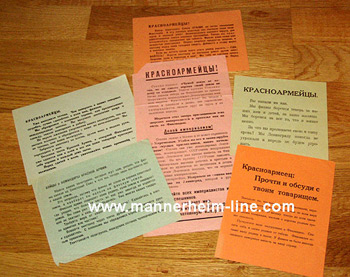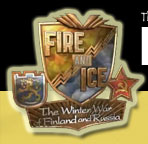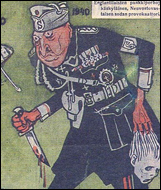

Both countries used different types of frontline propaganda during the Winter War. Although Finland and the Soviet Union had a common border, knowledge of the opponent was quite low on both sides, which resulted in numerous mistakes in both Finnish and Soviet propaganda.
The Finnish used leaflets, speeches over loudspeakers and posters at no-man’s land. Most of the Finnish leaflets were made by Finnish officers who had studied Russian language in pre-revolution Russia, or in the Russian Imperial Army. Few of them were aware of the fact that the Soviet government reformed the Russian language in 1918, and continued to write in old pre-reform Russian language, which looked strange to the Red Army soldiers and probably only strengthened the messages of Red Army political officers that all leaflets were made by the Russians who fought against the communists in the Russian Civil War.
Also, the educational level of the Red Army soldiers was often overestimated by the Finns. Using terms like 'world imperialism' and ”opportunistic behavior of military leadership of the Leningrad Military District” they wrote leaflets that were incomprehensible for an average Red Army soldier, who was often a farmer with a primary school education and little knowledge of the complicated terms.
Some Finnish leaflets condemned Stalin and encouraged Red Army men to overthrow Stalin’s rule; other Finnish leaflets tried to convince Red Army men that Stalin did not want the war and these were ambitious generals from the Leningrad Military District that started the war just to get promoted. Thus, the leaflets lacked consistency.
Almost all Finnish leaflets encouraged Red Army men to kill their political officers and defect to the Finnish side. Political officers were depicted as men in black leather coats and in black leather caps. This was a correct image of a Commissar or a political officer in the Red Army in the times of the Russian Civil War, but in 1939-1940 political officers wore normal Red Army uniforms, and the only difference from the other officers were red stars on the sleeves instead of V-shaped rank chevrons. Their role in the Civil War was to make sure that a unit commander, who was often a former Imperial Army officer, would not defect to the enemy. In the 1930s a political officer’s role was to educate the men, to explain the international situation and policies of the Soviet State.
Many Finnish leaflets told Red Army men that they would be paid for weapons if they turned them in to the Finnish Army. Some Finnish leaflets depicted Red Army generals in a very negative light. Finnish leaflets also appealed to feelings of Red Army men and explained to them that Finns were fighting for their homes and their families on their own land.
Leaflets were dropped on the Red Army positions by Finnish Air Force, or in some cases Finnish rangers took packs of leaflets with them on patrols behind enemy lines and just left them in Red Army trenches. Red Army soldiers were not forbidden to pick up leaflets and read them.
Soviet leaflets also carried a lot of mistakes, mostly due to misunderstanding of the fact that the Finnish nation stood united before the common outside threat.
In the beginning of the war the leaflets carried the news of formation of People’s Republic of Finland and the inauguration of its government under Otto Ville Kuusinen in Terijoki (now Zelenogorsk). The leaflets also stressed the liberation mission of the Red Army in Finland and the fact that the Red Army was not fighting against simple people of Finland but rather against their oppressors.
As the war progressed, Soviet propaganda became more elaborate. The leaflets stressed overwhelming superiority of the Red Army and weakness of Finnish defenses and encouraged Finnish soldiers to save their lives by surrendering to the Red Army.
Most of the Soviet leaflets stressed the fact that the Finnish government had pushed Finland into the war with the Soviet Union, and simple Finnish soldiers had to pay for this. “You are losing your life at the front, while ministers are packing their suitcases to escape abroad,” read one Soviet leaflet.
Soviet leaflets also pointed out pre-war policies of the Finnish government, which refused to spend on the needs of the army. “Treacherous capitalistic government of Finland did not even provide care for the wounded Finnish soldiers… Why would you shed your blood without purpose? Turn your weapons against the government of Ryti and Tanner,” read another leaflet.
Both Soviet and Finnish POWs were used actively in propaganda. Leaflets with pictures of happy life in a prisoner camp were produced by both sides.
Soviet leaflets were delivered to Finns by dropping them from airplanes.
Soviet leaflets were of little use and only made nice war souvenirs or toilet paper for Finnish soldiers. According to some sources, only four Finnish soldiers voluntarily defected to the Red Army side during the whole conflict, the rest of Finnish POWs were taken prisoner in battle.
Marshal Mannerheim observed in his memoirs that Finnish propaganda was just as useless. “Red Army soldiers were almost completely immune to our propaganda” stated the Marshal.

Finnish leaflets for Red Army men.
Bair Irincheev Collection
One interesting feature of leaflets in the Winter War is that they were printed on paper of bright color - orange, pink, blue, purple - as leaflets had to be visible on snow.





